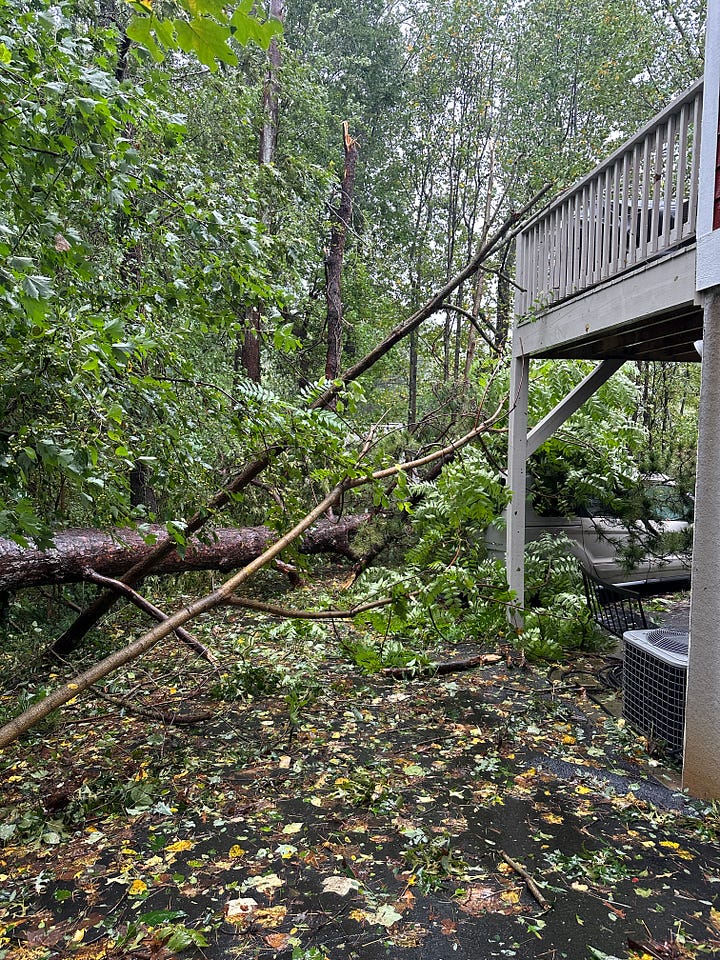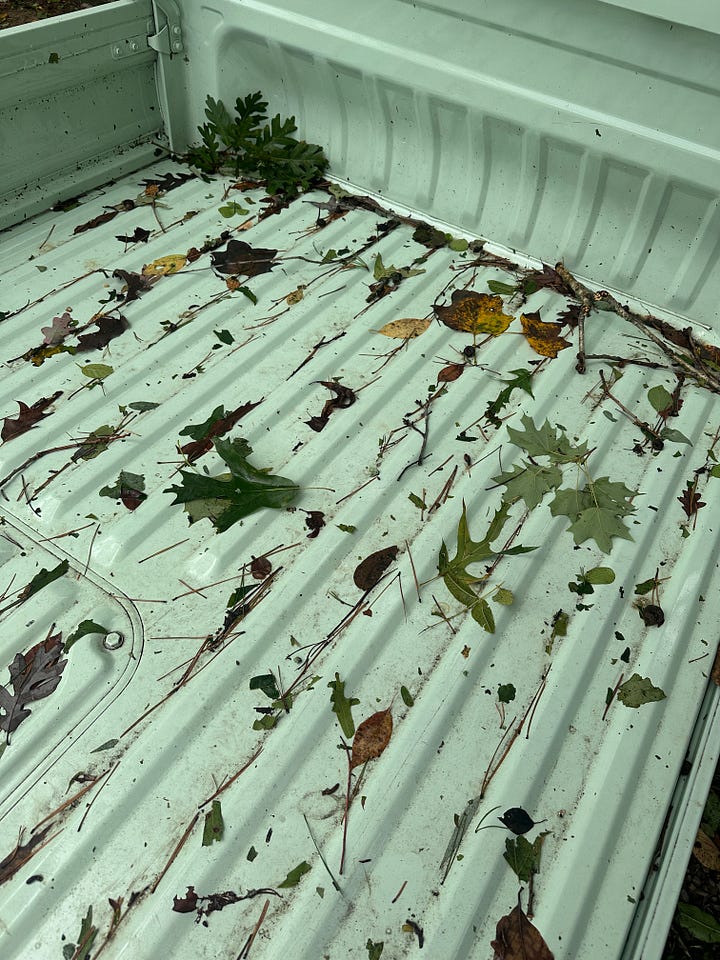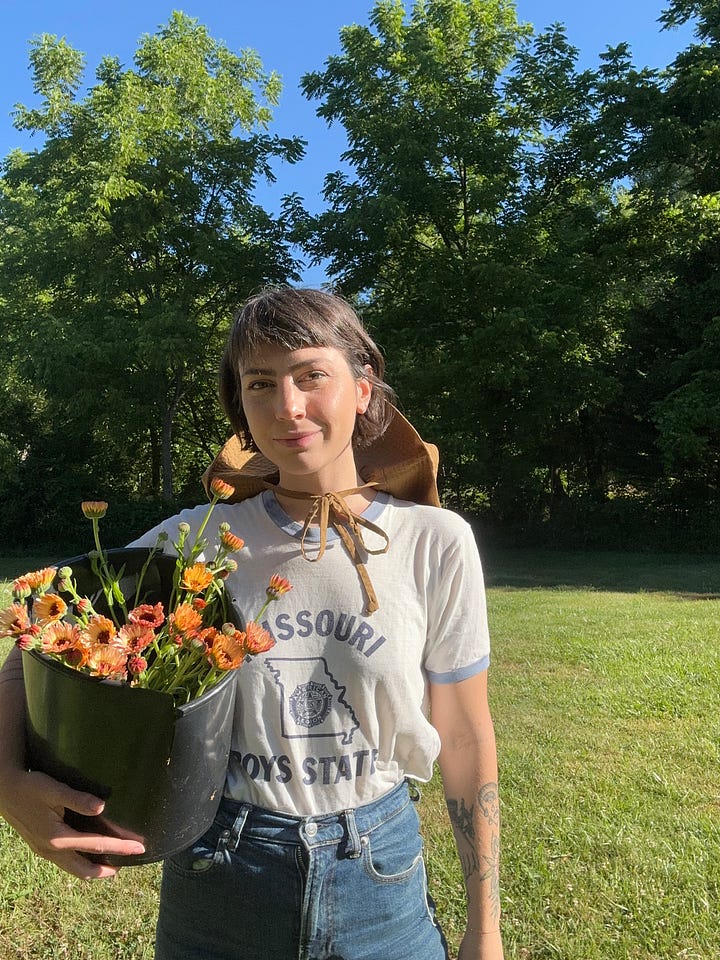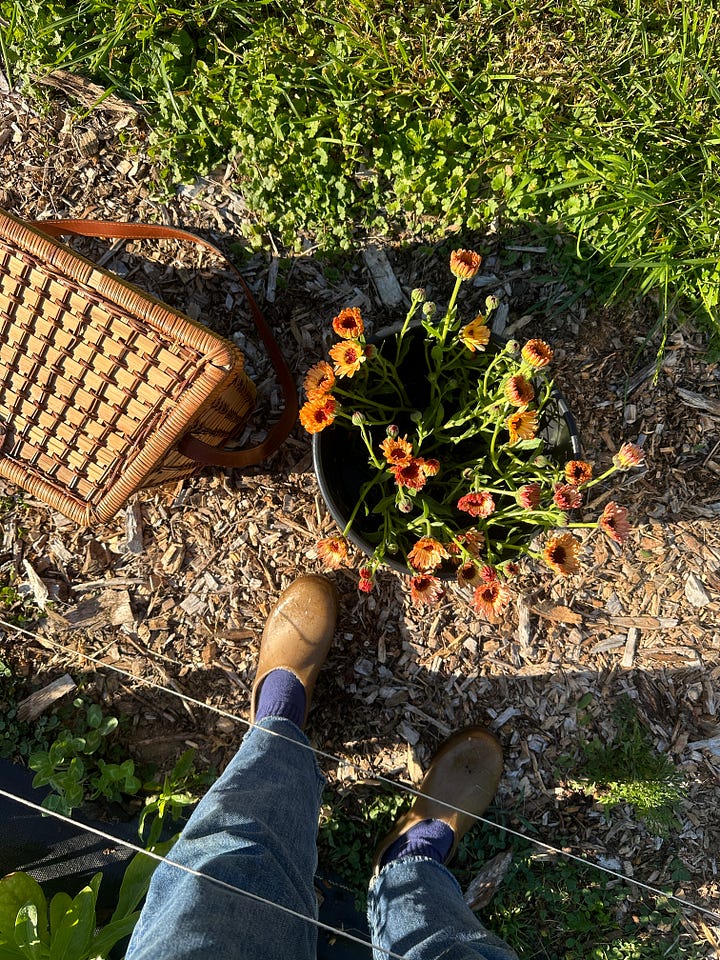It was September - a long, languid goodbye to summer. The leaves had just begun their subtle shifts. Mornings were starting to feel cool and crisp. The afternoon’s early autumn light cast all with a magical haze. It was still warm enough to coax out the migrating monarchs.
The milkweeds had gone to seed, drifting slowly through the air above white heath asters and goldenrods. I gathered apricot-colored persimmons in my hat. I began to turn the flower farm over for fall planting, energized by the season’s shifting. The dahlias hit their stride.
Then, the storm came. Its winds roared through the tiny grove of maple and oak trees surrounding my home.
At first, the wind humored us. But then trees started to creak and crack. Sheets of rain pelted the windows, along with the occasional thump of a branch hitting our roof. A towering 70-foot pine near our home bent unnaturally.
The next thing I remember was the distant crack and the smell of alpha-pinene as the tree fell. I felt my own hot well of grief swell inside - a small precursor of what would follow.
When the storm passed, we were completely disconnected. Our power was out. Our cell service was useless. There was no way to connect to the outside world.


What we didn’t know was that a mere mile away, the river swelled to a record-breaking 26 ft within hours, spilling out from the sides, and swallowing up homes, businesses, and lives.
What we didn’t know was that thousands of trees crashed down like dominoes for miles, powerlines crumpled, bridges and roads were washed out, and mudslides buried entire highways. People were trapped, and swift water rescues were underway. That entire parts of Asheville and the surrounding areas became unrecognizable.
Now, displaced in Florida, the surreal has magnified along with the heat, the endless flatland, and the manufactured landscapes.
Reports highlight the undeniable connection between the climate crisis and the environment I am in now.
How human-driven climate change has intensified storms like Helene with up to 20% heavier rainfall and 7% stronger winds due to rising temperatures in the Gulf of Mexico.
Helene also picked up ungodly amounts of water—about 7% more water vapor in saturated air for every 1°C of ocean warming. In this case, that meant the mountaintops along the Blue Ridge above Asheville were—according to Doppler radar measurement—hit with nearly 4 feet of rain. That meant that Asheville—listed recently by the national media as a “climate haven” and bulging with those looking for a climate-safe home—is now largely cut off from the world.
And just weeks after experiencing Helene, I found myself in the path of another record-breaking Hurricane Milton, also fueled by the increasingly warm waters in the Gulf.
The climate crisis is no longer a distant or abstract problem; it’s here, in our backyards, in our homes, in the floodwaters that swallowed up our streets that follow the rivers.
This week I will return to Asheville, back to my flower farm. The Dahlias have been flattened by the storm, and flooding has eroded the soil in some parts. The window for fall planting is closing fast.
But I’m finding it hard to think about planting and rebuilding the farm when there are so many in my community suffering and the impacts of our changing world are beginning to mount.
In the wake of the storm, we’re reminded once again that none of us are separate from the world around us. Whether we tend to the land or not, we are all apart of it all.
I would say that there exist a thousand unbreakable links between each of us and everything else and that our dignity and our chances are one. The farthest star and the mud at our feet are a family, and there is no decency or sense in honoring one thing, or a few things, and then closing the list. The pine tree, the leopard, the Platte River, and ourselves - we are at risk together, or we are on our way to a sustainable world together. We are each other's destiny.
- Mary Oliver, Upstream, Selected Essays
I feel the urgency of it all—not just to rebuild my farm, but to stand with my community as we face the uncertainty ahead. We are mobilizing, helping each other in ways that transcend politics, backgrounds, or differences - there’s a quiet, enduring hope in that—even as grief settles.
The land is asking something of us. It’s asking for us to listen. It’s asking us to rebuild but also to rethink how we live with the earth and care for the places we call home.
I’ve been feeling myself freeze, uncertain of what to do next.
What I do know is that I’ll be planting again soon, along with my neighbors. Daffodils for early spring - that break up through the cold soil.
Love,
Rowen
If you want to help, please consider donating to Beloved Asheville, a grassroots organization. These people are on the ground and connected to the community, distributing funds where they are most needed.










So well done, Rowen.
I am buoyed by the kinship, work, and wisdom in my Black Mountain community.
On our mountain it seems a miracle happens everyday whether it’s someone contributing to the road fund for the first time or the engineer who lets me shadow him so I understand how the Creek wants to run or the human who reminds us of the work that the Rhododendron roots do to slow the drainage of the watershed.
I carpooled down Highway 9 to check on my studio. I was grateful to be the passenger. Single lane S curves without guard rails!
Be well.
I think you would like What If We Get It Right? By Ayana Elizabeth Johnson…it’s everything of which you speak.💧💦🩵
Having lived through our 'Great Storm' in 1987 I can relate to waking up and finding that the world outside had changed so completely - whole woodlands felled in an instance, power lines down, streets in chaos and more. Although we didnt get the water. Its really tough to face the changes and pick yourself up and start again, but then resilience kicks in .....